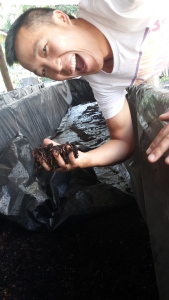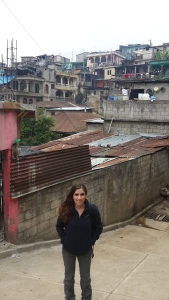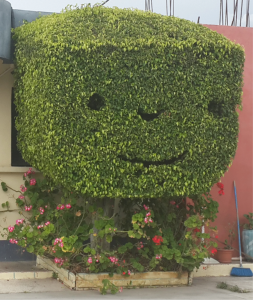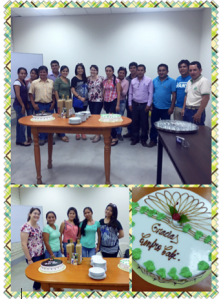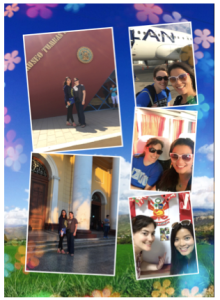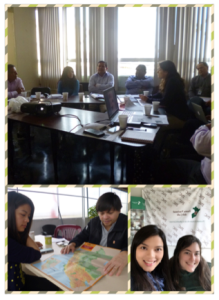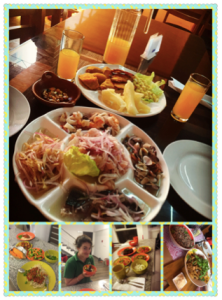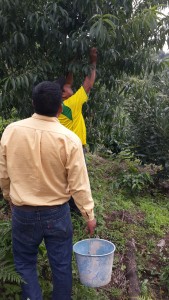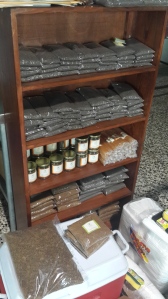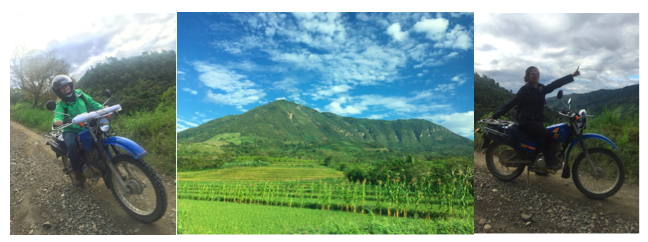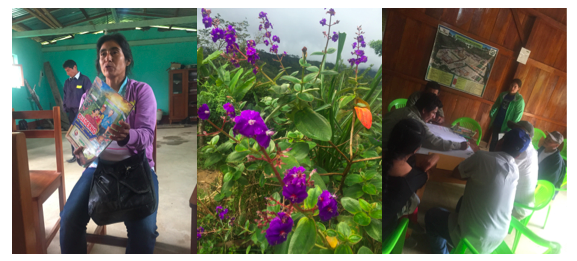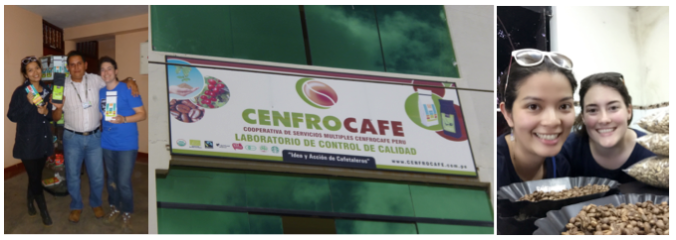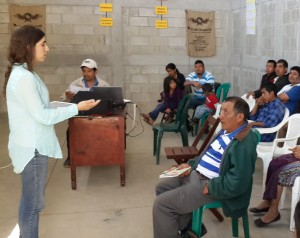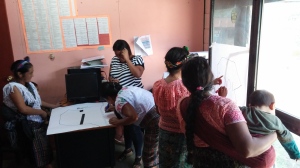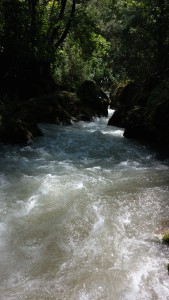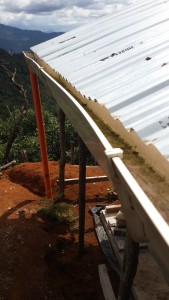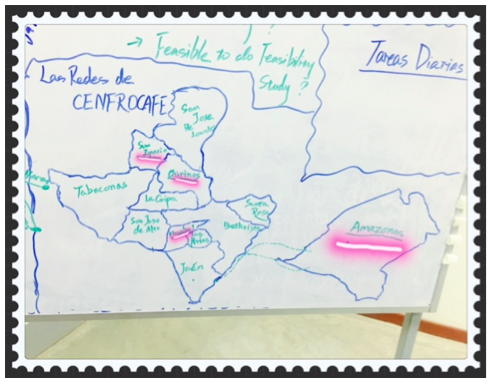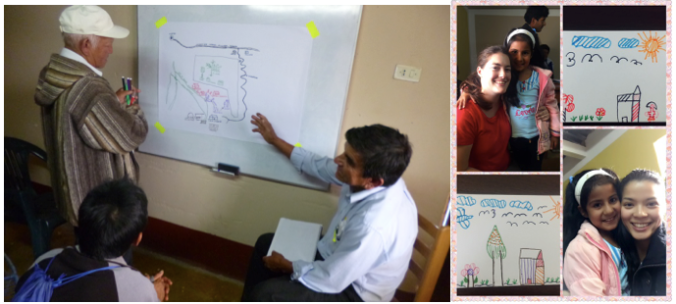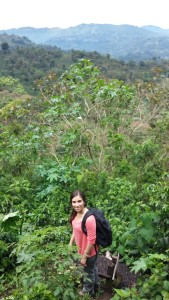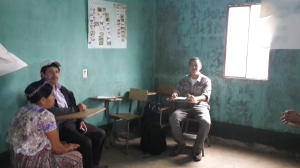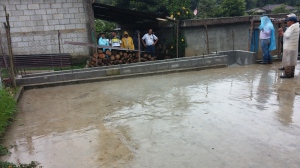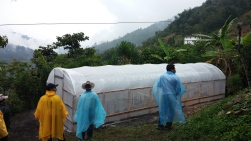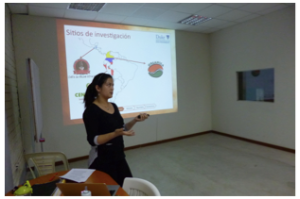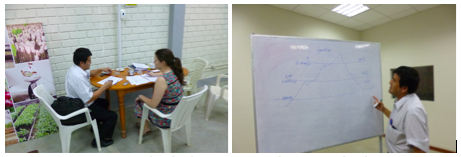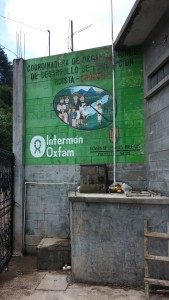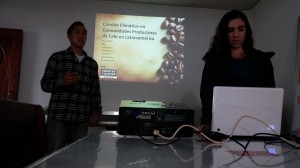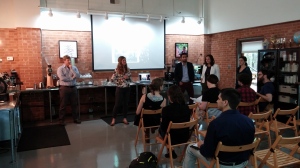We left the beautiful mountains of Huehuetenango a couple of weeks ago to continue our research interviewing key actors at the local, regional, and national levels in Guatemala. This meant saying farewell to all the wonderful friends we have met through CODECH. Thank you especially to Don Francisco and Don Gaspar, who made it extremely easy for us to coordinate and conduct interviews, focus groups, and parcel visits with co-op leaders and producers. We couldn’t have asked for better people to work with. ¡Ya los extrañamos mucho!
We are in Quetzaltenango (or Xela as the locals call it) right now, but will go to Guatemala City next week to finish our key actor interviews. From regional governmental organizations, to various NGO’s, to other coffee co-ops, we have gathered quite a diverse range of perspectives and ideas regarding coffee, climate change, and our 3 recommendation strategies in particular.
But as we wrap up our time in Guatemala, we would like to reflect on our time here and what we have learned thus far:
- First and foremost, climate change is real. It has affected everywhere we have gone in Guatemala. For the producers at CODECH, water collection systems would be a very welcomed strategy, especially since water in certain mountainous villages is hard to come by during the summer months where the majority of coffee washing takes place. Although there is generally enough land to implement a water collection system, money for materials and training are critically needed to implement this strategy.
- Solar dryers are another infrastructure strategy that producers are interested in and that CODECH is already exploring. Most producers agree that solar dryers should be managed by the individual base level associations, but can be communally shared. Leaders have already built 3 prototypes to test out the next harvest, but if deemed successful, more money and equipment will be needed to multiply this drying strategy throughout different farms.
- Income diversification through other commercialized products is intriguing and important to everyone we talked to. The main problem is finding a market. Producers are more than willing to grow whatever it takes that they can sell, but finding customers is the biggest barrier we heard. Some producers and co-ops we talked to are subsidizing income through fresh produce or processed goods such as honey. CODECH is exploring how to commercialize honey, but other viable products, training, investment money, business savvy, and most importantly, a market, are needed to fully implement diversification strategies
Lastly, we want to recognize the amazing heart and resiliency we have seen in the Guatemalan producers we have met. They work so hard to tend their coffee parcels in the mountains, often hours away from where they live. They have to climb and tend their steep parcels, lugging heavy materials back and forth. They have to overcome environmental issues that are completely out of their control. They have to rely on whatever the international market price is for their income. They have to balance agricultural practices with family necessities. And ultimately at the end of the day, they have to toil the land to produce their own livelihood. But through all of this, the coffee producers we met were incredibly generous, positive, and friendly. After receiving so much love and hospitality from them and expressing our gratitude, we often would hear “No tenga pena,” loosely translated as no worries or “de nada”. Although there was a lot to be concerned about regarding coffee, climate change, and livelihood, they lived fully and joyfully through hard work, community ties, simple pleasures, and a spirit of resiliency. As we work on our research trying to solve major problems, we also hope to live life a little more like our friends in Guatemala – always resilient, but not allowing life’s worries affect our attitude or living as fully as possible ¡No tenga pena!


